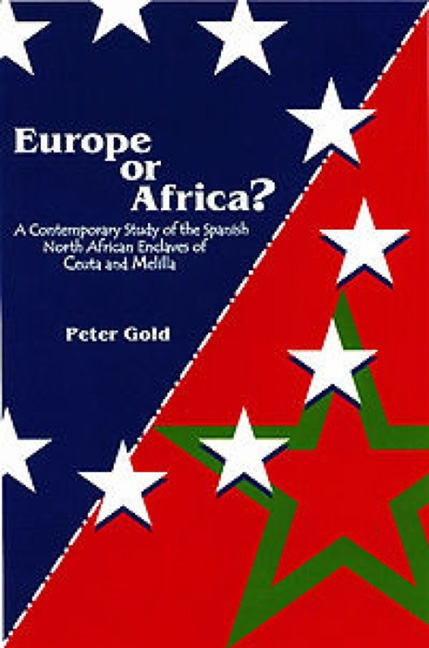Book contents
- Frontmatter
- Dedication
- Contents
- Acknowledgement
- List of figures and tables
- Map
- Introduction
- 1 The impact of the enclaves on Spanish–Moroccan relations
- 2 The enclaves within the Spanish state: the autonomy statutes
- 3 The evolving political landscape in the enclaves
- 4 The 1985 Immigration Law and community relations in the enclaves
- 5 The enclaves: a migration gateway to Europe
- 6 The enclaves: Europe or Africa?
- 7 Gibraltar and the enclaves
- 8 Conclusion: looking to the future
- References
- Index
1 - The impact of the enclaves on Spanish–Moroccan relations
- Frontmatter
- Dedication
- Contents
- Acknowledgement
- List of figures and tables
- Map
- Introduction
- 1 The impact of the enclaves on Spanish–Moroccan relations
- 2 The enclaves within the Spanish state: the autonomy statutes
- 3 The evolving political landscape in the enclaves
- 4 The 1985 Immigration Law and community relations in the enclaves
- 5 The enclaves: a migration gateway to Europe
- 6 The enclaves: Europe or Africa?
- 7 Gibraltar and the enclaves
- 8 Conclusion: looking to the future
- References
- Index
Summary
By the middle of the nineteenth century both a French and a Spanish presence had been firmly established in North Africa. Despite the reaffirmation at the Conference of Algeciras in 1906 of the principle of the sovereignty of Morocco, the Franco-Spanish Agreement of 1912 divided Morocco into two Protectorates, with France seen as the main ‘protector’ while Spain occupied Tarfaya, Ifni, and the Río de Oro in Western Sahara (where Spain had had a presence since the Spanish–Moroccan Treaty of 1767 in order to protect the Canary Islands) and, in the north, most of the region of the Rif and Yebala. The period immediately following the establishment of the Protectorates saw the conversion of Ceuta and Melilla from presidios to towns, with population increases (largely consisting of poor immigrants from southern Spain) between 1900 and 1920 of 165 per cent and 460 per cent respectively (Carabaza and de Santos, 1992, pp. 50–51). The resistance to Spanish occupation in the Rif began in 1921 under Abd el-Krim, and Spain used the enclaves as bases from which to put down the insurgency. The Spanish Foreign Legion, led from 1925 by the young Francisco Franco, joined forces with the French under Marshall Pétain and by 1927 they had succeeded in pacifying Spanish Morocco.
When the Spanish Nationalists undertook to oppose the Republicans in 1936, General Franco, who began the campaign which led to the Civil War from the North African enclaves, had the support of a large number of Moroccan volunteers and a so-called ‘Moorish Guard’ for his personal protection. Although Franco received support from the Axis powers during the Civil War, during World War II Spain declared itself a non-belligerent and remained officially neutral throughout, despite providing assistance to the Axis powers from North Africa (Carabaza and de Santos, 1992, pp. 70–71). At the same time many Moroccans fought for the liberation of France.
After 1945, when Spain was left diplomatically isolated from the rest of Europe because of the nature of the Franco regime, the Spanish Caudillo cultivated good relations with the Arab nations of North Africa and the Middle East. In the early 1950s the potential of these good relations in the context of the Cold War with the Soviet Union (as well as the desire of the United States to establish safe military bases in south-west Europe) led to the start of Spain's rehabilitation in the West.
- Type
- Chapter
- Information
- Europe or Africa?A Contemporary Study of the Spanish North African Enclaves of Ceuta and Melilla, pp. 1 - 35Publisher: Liverpool University PressPrint publication year: 2000

